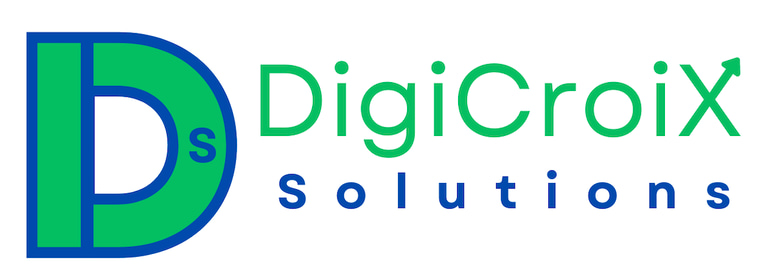Why Your Hospital Marketing Strategy is Failing in 2025
Discover the hidden gaps in your hospital marketing strategy that are costing you patients every month. Learn how to revamp your hospital marketing strategy to consistently attract high-value cases.
Vishwa Raval
6/30/20245 min read


Understanding the Current Landscape
As we advance through 2025, it becomes increasingly essential to comprehend the evolution of hospital marketing strategies and the elements that inform their effectiveness. Over the past few years, there has been a significant shift in patient behavior, influenced by various factors such as the rise of health-consciousness, the demand for personalized care, and an increasing emphasis on digital accessibility. Patients today are not merely passive recipients of healthcare services; they are well-informed consumers equipped with vast resources to research and compare care options.
Advancements in technology have also played a critical role in reshaping hospital marketing initiatives. The proliferation of mobile devices and the ubiquity of social media platforms have changed how patients engage with healthcare providers. Modern consumers expect seamless access to information, quick response times, and convenience in scheduling appointments. Consequently, hospitals must adapt their marketing strategies to align with this digital transformation, embracing tools such as telehealth services, online appointment systems, and engaging social media campaigns to meet patient expectations effectively.
Moreover, shifts in healthcare expectations have necessitated a departure from traditional marketing approaches. Patients are becoming increasingly focused on quality, transparency, and value in their healthcare choices. As they navigate a landscape saturated with options, hospitals need to showcase their unique value propositions and build trust through consistent, high-quality patient experiences. This entails leveraging patient testimonials, emphasizing outcomes, and highlighting specialized services within their marketing narratives.
In light of these evolving dynamics, it is vital for hospital marketers to recognize the trends emerging within the industry. By doing so, they can implement strategies that not only resonate with today's patients but also position themselves favorably against their competitors. Understanding the current landscape is a crucial first step in realigning hospital marketing strategies toward effective and sustainable engagement in 2025 and beyond.
Identifying Hidden Gaps in Your Marketing Strategy
The effectiveness of a hospital marketing strategy in 2025 heavily relies on the identification and rectification of hidden gaps that may otherwise undermine its success. One critical area often overlooked is audience segmentation. Hospitals must recognize that their patient demographic is not monolithic; rather, it consists of diverse groups with varying needs and preferences. For instance, targeting young families might require different messaging than approaches aimed at senior citizens. An absence of effective segmentation can lead to generalized marketing efforts that fail to resonate with specific groups, thereby diminishing patient acquisition efforts.
Another significant gap often seen in hospital marketing is messaging inconsistency. It is essential for hospitals to ensure that their communication reflects a coherent brand message across all platforms, including websites, social media, and print materials. Discrepancies in how services are portrayed can confuse potential patients and erode trust. For instance, if a hospital promotes a specific service on social media that is not reflected on their website, it creates ambiguity that can lead to missed opportunities for patient engagement.
Digital engagement strategies also deserve attention, especially in a time when online interactions are pivotal. Many hospitals still fall short in effectively utilizing digital channels to foster meaningful connections with their audience. For example, failure to maintain an active social media presence or neglecting email marketing can result in a lost opportunity to keep existing patients informed and engaged, ultimately affecting retention rates.
Lastly, the integration of patient feedback is vital yet often under-appreciated. Hospitals that do not actively solicit and incorporate patient insights may miss out on critical information that could enhance service delivery and patient experience. By neglecting to acknowledge what patients value or expect from their healthcare providers, hospitals risk being out of touch with their audience’s needs, which can hinder both patient acquisition and retention. Addressing these gaps is crucial for a successful hospital marketing strategy.
Revamping Your Hospital Marketing Strategy
The landscape of healthcare marketing is evolving rapidly, necessitating a revamp of hospital marketing strategies to remain competitive and relevant. One of the first steps in this transformation is to revisit your brand messaging. This involves ensuring that your messaging resonates with your target audience and emphasizes the unique services your hospital offers. Crafting a message that clearly communicates value can significantly enhance recognition and trust among potential patients.
Data analytics plays a crucial role in refining targeting efforts. By analyzing demographics, patient behaviors, and trends, hospitals can more effectively tailor their marketing campaigns to meet the specific needs of their community. Utilizing these insights allows for targeted outreach that engages potential patients at the right time and with the right message. Furthermore, integrating advanced analytics tools can streamline this process, providing hospitals with actionable information to enhance decision-making.
Social media and online platforms are invaluable tools in the realm of hospital marketing. Leveraging these channels not only increases visibility but also fosters communication with patients. Engaging content on platforms like Facebook, Instagram, and Twitter can humanize your brand, offering potential patients a glimpse into the caring environment your hospital provides. Utilizing online patient reviews and testimonials also helps to build credibility and trust.
Cultivating a positive patient experience is another critical component of a successful hospital marketing plan. Ensuring that patients feel valued and satisfied at every touchpoint enhances their likelihood of returning and recommending your services to others. This encompasses everything from compassionate care to streamlined administrative processes. Finally, maintaining a commitment to continuous improvement and adaptation in your marketing strategies will ensure that your hospital remains responsive to market changes and patient needs, effectively attracting and retaining high-value cases.
Measuring Success and Continuous Improvement
To effectively evaluate the success of your hospital marketing strategy in 2025 and beyond, it is essential to establish clear key performance indicators (KPIs). These metrics serve as measurable values that demonstrate how effectively your marketing efforts are achieving critical objectives. Common KPIs for hospital marketing include patient acquisition costs, patient retention rates, website traffic, engagement on social media platforms, and conversion rates from various digital campaigns.
The first step in measuring success involves defining these KPIs. This definition should align with your overall marketing goals, which may range from increasing brand awareness to promoting specific services. Once the metrics are set, the next crucial step is the collection of data. Utilizing digital analytics tools, such as Google Analytics for website performance or software that tracks patient interactions with marketing materials, can provide invaluable insights. Additionally, surveys and feedback forms can enable patients to express their experiences, further enriching your data pool.
Analysis of this data should not be a one-time event but rather an ongoing process. Continuous monitoring allows for the identification of trends and areas in need of improvement, equipping marketing teams with the necessary information to make informed decisions. Feedback loops are critical in this regard; regularly soliciting and acting on patient feedback ensures that your marketing strategies are responsive to their needs and preferences. This adaptability supports sustained patient engagement over time.
In conclusion, the success of your hospital marketing strategy hinges not only on how well it performs against predefined KPIs but also on the ongoing process of collecting and analyzing data. The commitment to continuous improvement, fueled by data-driven insights and regular feedback collection, will help ensure the marketing efforts remain effective in a rapidly changing healthcare landscape.
Get in Touch
Book your free consultation today and let's create a strategy to elevate your success!


Address
94 Shree Nagar Apartment, Sola Road, Naranpura, Ahmedabad, Gujarat, India 380063
6706 Fulton Avenue, Burnaby, BC, Canada V5E 3H1
Phone
+91 88497 12474
Quick Links
© 2025. All rights reserved.
Useful Links
Engagement
Subscribe
+91 88497 12474
